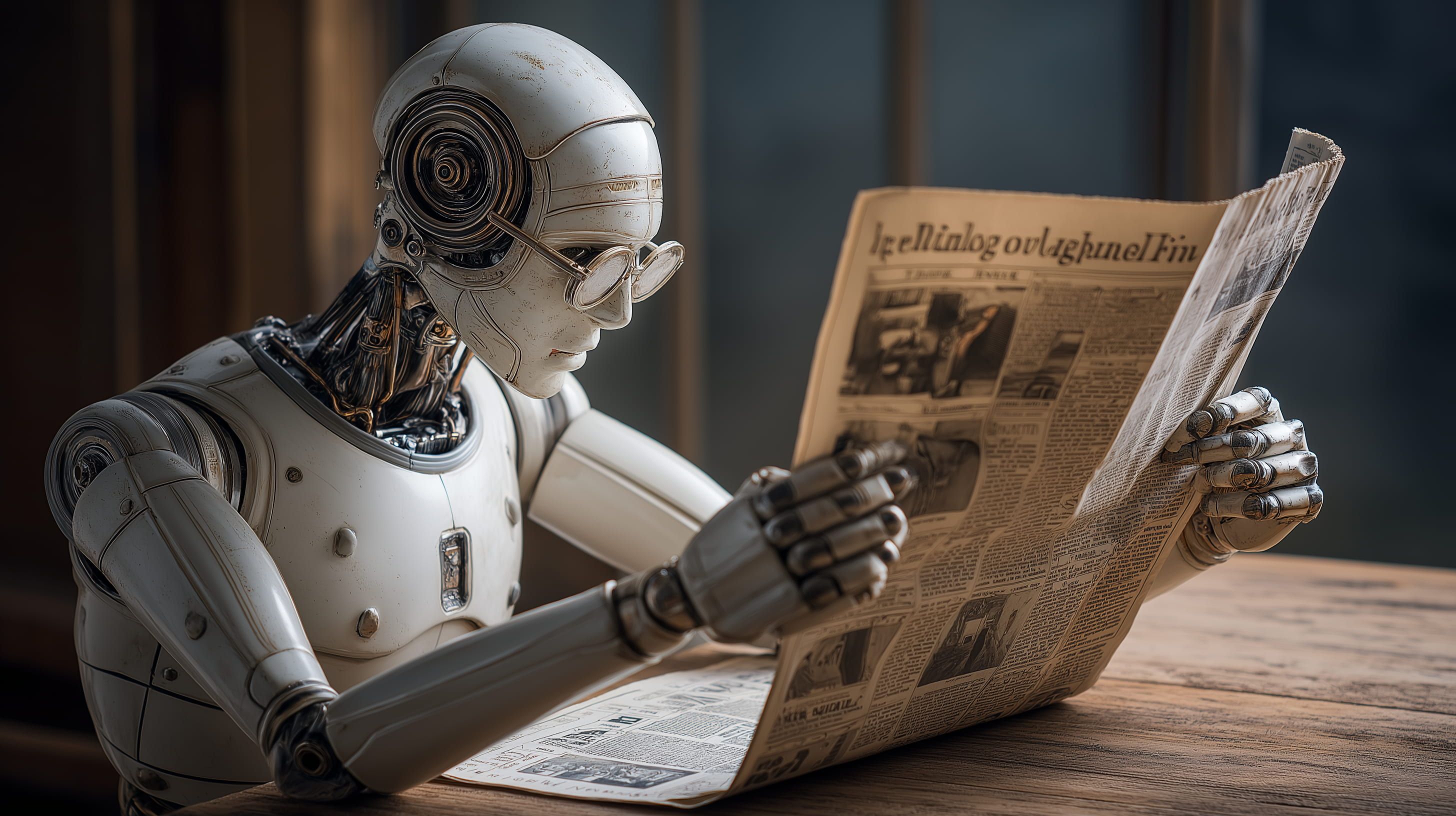Research Breakthroughs & New AI Technologies
- OpenAI launches GPT‑5: OpenAI released GPT-5, the much-anticipated successor to GPT-4, positioning it as a significant step” toward artificial general intelligence. CEO Sam Altman touted GPT‑5 as providing legitimate PhD-level expertise on demand” across domains [1]. The model is now accessible (with usage limits) even to free ChatGPT users and is being integrated into Microsoft’s Copilot assistant. While GPT‑5’s performance gains over GPT‑4 are modest on benchmarks, experts say it resets” OpenAI’s core technology in ways that lay groundwork for future leaps [2]. Commentary: AI researchers like Cornell’s John Thickstun note GPT‑5 shows meaningful improvements but caution it’s not the apocalyptic end of work” – there remains a lot of headroom” for AI systems to improve [3]. The launch comes amid frenzied industry competition (rival Anthropic rolled out a new Claude model days earlier) and massive investment demands for OpenAI to scale its compute infrastructure [4] [5].
- AI in deep space medicine: NASA and Google unveiled a proof-of-concept Crew Medical Officer Digital Assistant” to aid astronaut health during deep-space missions without a human doctor on board [6]. Announced in an Aug. 8 Google blog, this AI-powered system uses natural language processing on spaceflight medical literature to provide real-time health analyses and decision support for crew medical officers [7]. Early trials, including simulated medical scenarios, showed promising accuracy in diagnosing ailments from reported symptoms [8]. Expert take: Google’s federal AI lead Jim Kelly emphasized that this innovation push[es] the boundaries” of AI to deliver essential care in the most remote environments [9]. The tool, part of NASA’s Artemis moon mission efforts, not only could safeguard astronauts on lunar and Mars expeditions but also foreshadows AI’s potential to bring quality healthcare to remote regions on Earth [10].
- OpenAI goes (partly) open-source: In a nod to the open-model movement, OpenAI debuted two new downloadable language models – a 117 billion-parameter model (
gpt-oss-120b) and a 21B model (gpt-oss-20b) – that can run on local hardware [11]. Remarkably, the larger model can operate on a single high-end GPU (80GB VRAM) and the smaller on a typical laptop (16GB RAM), yet they deliver performance approaching some ChatGPT modes [12] [13]. Why it matters: These open-weight” models (freely available via HuggingFace and optimized for Windows by Microsoft) address growing demand for privacy and cost-saving by letting users and even nations operate AI without relying on Big Tech’s cloud [14] [15]. OpenAI’s CEO Sam Altman frames the release as aligned with the mission to make AI accessible to the most people possible” and rooted in democratic values” [16]. Analysts see this as a strategic response to rising competition – e.g. China’s open-model DeepSeek and Meta’s Llama – though critics note the models aren’t fully open-source, as OpenAI withholds training data details [17] [18].
Business & Industry Updates
- Apple’s secret AI search project: Apple has reportedly formed a new team, ironically codenamed Answers, Knowledge, and Information,” to develop its own AI-powered answer engine” [19]. According to a Bloomberg scoop, the team is building a ChatGPT-like system that can draw information from across the web to answer users’ questions – potentially as a standalone app or baked into Siri, Safari, and other Apple products [20]. The company has started recruiting search algorithm experts for this effort [21]. Context: Apple’s move comes amid its cautious approach to AI – it integrated ChatGPT into Siri in limited ways, but broader AI upgrades to Siri have been repeatedly delayed” [22]. With Google facing an antitrust order that could loosen its grip on Apple’s default search deal [23], Apple appears to be hedging its bets. Expert commentary: Industry analysts see this as Apple playing catch-up in generative AI and aiming to lessen dependence on Google. A bespoke answer engine” could let Apple control the user experience (and privacy) of AI search, but it enters a crowded race against Google’s own AI search features and OpenAI’s chatbots.
- Investors double down on AI startups: The AI funding frenzy shows no sign of cooling. Clay, a startup offering AI-driven sales automation, saw its valuation more than double to $3.1 billion in just three months after a new $100 million funding round [24] [25]. Alphabet’s growth fund CapitalG led the round, and other top VCs (Sequoia, First Round, etc.) piled in [26] [27]. Just a few months prior, Clay was valued at $1.5B – highlighting how quickly investors are inflating AI company valuations in 2025. Broader trend: Global dealmaking in the AI sector for the first seven months of 2025 hit its highest level since the 2021 boom, as venture capital bets big that AI will enhance productivity and reduce costs” across industries [28]. Major AI players are also amassing war chests – for instance, reports say OpenAI raised $8.3 billion in a fresh round (part of an unprecedented $40B fundraising plan) led by Dragoneer Investment Group. Insight: Despite economic uncertainties, AI is seen as a transformative tech wave akin to the dot-com era, fueling a gold rush for startups. However, some experts warn of a possible bubble, noting that not every AI product will live up to its lofty valuation.
- Tesla streamlines its AI chip ambitions: Elon Musk is refocusing Tesla’s AI hardware strategy, shuttering the Dojo” supercomputer chip project to concentrate on the company’s next-gen automotive AI chips. A Bloomberg report revealed Musk disbanded the team working on Dojo – a custom AI training supercomputer once touted as a game-changer for Tesla’s self-driving tech [29]. Musk confirmed the pivot on X (Twitter), arguing it doesn’t make sense for Tesla to divide its resources” between two different AI chip designs [30]. Going forward, Tesla will pour all effort into its upcoming AI5 and AI6 chips – which are optimized for inference (running AI models in real time in cars) but also pretty good” at training, according to Musk [31]. Expert view: This surprise move comes after Morgan Stanley once valued Tesla’s Dojo initiative at up to $500 billion of potential market value [32], seeing it as Tesla’s version of AWS (offering cloud AI services beyond cars). By pulling the plug, Musk signals a pragmatic recognition that Tesla can’t win at both training and inference hardware simultaneously, and that focusing on AI chips to power Autopilot and Optimus robots is more immediately critical. Industry analysts note that Big Tech’s AI arms race requires hard choices – Tesla appears to be prioritizing delivering AI features to consumers now over competing with NVIDIA in the AI datacenter space.
- AI upheaval in IT services – TCS layoffs: The world’s largest IT outsourcing firms are bracing for an AI-induced shakeup. India’s Tata Consultancy Services (TCS) set off alarm bells by announcing over 12,000 job cuts – about 2% of its workforce – the biggest layoffs in its history [33]. Officially, TCS attributed the cuts to skill mismatches” rather than automation. However, industry experts say this is likely the first major wave of AI-driven redundancies in the $283 billion global outsourcing sector [34] [35]. They project up to 500,000 jobs in IT services (especially middle-management, testing and routine support roles) could be eliminated in the next 2–3 years as clients embrace AI solutions. Commentary: For decades firms like TCS, Infosys, and Accenture thrived by employing armies of engineers for business process and IT support tasks. Now generative AI and automation threaten many of those roles. Consultants note that AI copilots can handle tasks like code testing, report generation, and helpdesk queries far more efficiently. This puts the onus on employees to re-skill themselves” for higher-value work [36] [37] – echoing OpenAI’s Sam Altman, who remarked he’s more worried about older workers resisting retraining than about Gen Z in the AI era. While AI adoption will boost productivity, the transition could be painful. The TCS cuts, coming from India’s top private-sector employer, underscore that even white-collar tech jobs are not immune to AI disruption.
Policy, Regulation & Geopolitical Developments
- US–China tech tensions flare over AI chips: Chip war” brinkmanship intensified ahead of a possible Trump–Xi summit. China is pressuring the U.S. to relax export controls on advanced semiconductors critical for AI, as a bargaining chip in broader trade deal talks [38]. According to an FT report (confirmed by Reuters), Beijing’s envoys in Washington specifically want curbs lifted on high-bandwidth memory (HBM) chips – tech vital for training AI models – which Chinese firms like Huawei need for developing their own AI processors [39] [40]. Successive U.S. administrations (from Biden to Trump) have tightened such exports to hinder China’s AI and defense progress [41]. Geopolitical context: President Donald Trump has cast the U.S.–China AI race as the defining conflict of the 21st century. China’s request comes as the two sides explore a leaders’ meeting; it signals that AI tech access is now a top-tier negotiating point alongside tariffs and trade balances. Meanwhile in Beijing, an influential state-media-linked social media account slammed Nvidia’s new H20 AI chips as unsafe and subpar for China [42]. The post (affiliated with CCTV) claimed Nvidia’s H20 chips – a version developed for China after U.S. bans – might harbor backdoor” access allowing remote shutdown, and it urged Chinese buyers to shun them [43] [44]. This came days after China’s cyberspace regulator summoned Nvidia to probe these security concerns [45]. Expert insight: Together, these developments highlight a bifurcating tech world. China is leveraging its market power to demand AI hardware on its terms, while also signaling it won’t trust even approved” foreign chips. The U.S. faces a dilemma – whether to ease chip rules to thaw relations, or double-down on tech restrictions amid national security hawks’ warnings. For AI industries, the fallout could mean divergent East/West tech ecosystems if no compromise is reached.
- Washington fast-tracks AI in government: The U.S. General Services Administration added OpenAI’s ChatGPT, Anthropic’s Claude, and Google’s Gemini to its list of approved software vendors for federal agencies [46]. Announced Aug. 5, this move is part of the Trump administration’s new AI initiative to vastly expand” AI use across government while loosening regulations to maintain an edge over China [47] [48]. With these approvals, agencies can readily procure and deploy chatbots and AI assistants via a centralized platform, under pre-negotiated contracts [49] [50]. The GSA emphasized it chose models prioritizing truthfulness, accuracy, transparency, and freedom from ideological bias” [51]. Broader policy: President Trump’s AI blueprint (rolled out July 23) includes 90+ actions – from encouraging AI exports to allies, to curbing state laws seen as over-regulating AI [52]. It’s a sharp reversal from former President Biden’s approach: Biden had required agencies to adopt concrete AI safeguards and even signed an order against AI-driven misinformation – measures that Trump quickly rescinded [53]. Commentary: This policy pivot has drawn mixed reactions. Proponents argue it will accelerate innovation and keep U.S. AI competitive globally. Critics worry about a light-touch” regime: by prioritizing rapid adoption over strict oversight, agencies might deploy AI systems that haven’t been fully vetted for bias or security. Nonetheless, federal endorsement of tools like ChatGPT is a milestone, likely to spur more mainstream business and public sector uptake of AI [54]. It also reflects the ideological divide in AI governance – one administration’s high fence” on AI exports and ethics is another’s red tape to be torn down [55].
Ethical Debates & Public Response
- Whistleblowers warn of turmoil at top AI institute: A group of employees at the Alan Turing Institute (ATI) – the UK’s flagship AI research center – filed a bombshell whistleblowing complaint to the UK Charity Commission alleging governance failures and a toxic” internal culture [56] [57]. The complaint, revealed on Aug. 10, claims ATI’s board (led by ex-Amazon UK head Doug Gurr) has neglected basic duties, ignored a staff letter of no confidence, and let a climate of fear, exclusion, and defensiveness” fester [58] [59]. Whistleblowers fear the institute is in danger of collapse” as the UK government threatens to pull funding [60]. Indeed, the Technology Secretary, Peter Kyle, recently demanded an overhaul of ATI’s leadership and a refocus of its research toward defense and national security – implying future government support hinges on these changes [61] [62]. In response, ATI has begun a drastic restructuring: ~50 staff (10% of workforce) were put at risk of redundancy, and projects on online safety, housing inequality, AI ethics and more are being axed or paused in favor of defense-oriented work [63] [64]. Expert commentary: Governance experts say this episode underscores tensions in publicly funded AI labs – balancing academic freedom against political priorities. The ATI case reveals unease among researchers about a potential militarization of AI research (shifting focus to defense at the cost of social good projects [65]). It also spotlights leadership challenges: multiple senior scientists have quit under CEO Jean Innes, and staff accuse the board of failing to hold management accountable [66]. The Charity Commission declined to confirm an investigation, but if the claims hold, the UK’s premier AI institute may need radical reform to restore trust. The situation has also ignited debate in Britain’s AI community: should a national institute prioritize government directives (like defense tech) or hew to a more independent, ethics-conscious agenda?
- Digital resurrection” sparks soul-searching: A eerie trend is blurring the line between mourning and technology – the rise of AI deathbots” that re-create digital facsimiles of the deceased. This weekend, The Guardian chronicled several stunning examples: at a recent U.S. concert, Rod Stewart performed” alongside AI-generated projections of late rock icons (Ozzy Osbourne, Tina Turner, etc.), which left some fans awed but others deeply uneasy [67]. In another case, journalist Jim Acosta interviewed” a digital avatar of a teen school-shooting victim, whose parents had commissioned an AI version of their son so they could hear his voice again [68]. Even Reddit co-founder Alexis Ohanian shared an AI-generated video of his late mother hugging him, moving him to tears [69]. These are early snapshots of what commentators dub the digital resurrection” phenomenon – using a person’s photos, videos, voice notes and texts to algorithmically revive their likeness after death [70]. Numerous startups now offer to create such griefbots, raising thorny questions about consent, exploitation, and psychological impact [71] [72]. Expert views: Psychologists and ethicists are sharply divided. Elaine Kasket, a cyberpsychologist, notes that widely available large language models make it very straightforward” to build a chatbot that feels uncannily like a lost loved one – especially if given enough of the person’s digital remains” (social media, messages, etc.) [73]. This ease means virtual immortality is no longer sci-fi, and demand could grow as people seek comfort from interactive avatars of their relatives. However, Dr. Louise Richardson (University of York) warns that deathbots may disrupt healthy grieving. By offering an illusion of ongoing interaction, they can impede acceptance of the loss: they get in the way of recognising what has been lost, because you can continue to ‘talk’ to the deceased” [74]. There’s also concern these AIs present a sanitized version of the person – families might intentionally omit negative traits, creating an idealized digital ghost that never truly existed [75]. Philosophers call this digital necromancy” and caution it can become addictive or prolong denial [76]. On the ethical front, since the dead cannot consent, who has the right to a person’s data after death? Some people now even put no AI clone” clauses in their wills [77]. Furthermore, a burgeoning grief tech industry could exploit vulnerable mourners with costly services – in China, simple photo-based avatars cost just ¥20, but hyper-realistic interactive doubles can run ¥50,000 (∼$7,000) [78]. Bottom line: Digital resurrection is here, and society is only beginning to grapple with its moral and emotional ramifications. As one ethicist put it, the technology appeals to deeper longings” in an increasingly secular age, but confronting death via AI might raise more ghosts than it settles.
New Consumer & Enterprise AI Tools
- Microsoft rolls out Copilot 3D: In a quiet but intriguing launch, Microsoft introduced Copilot 3D, a free AI tool that converts 2D images into 3D models [79] [80]. Available in the experimental Copilot Labs for all users (no paid subscription required), Copilot 3D lets anyone upload a standard photo and get back a downloadable 3D object usable in game engines, 3D printers, or AR/VR apps [81] [82]. Early hands-on tests show it works best with clear, well-lit product images – for example, the AI turned Ikea furniture pictures and even bananas into fairly accurate 3D models [83]. However, it struggles with more complex subjects like people or animals: one tester’s attempt to model his pet dog produced hilariously mangled anatomy (a reminder that the feature is in preview) [84]. Why it matters: This tool lowers the barrier for 3D content creation, hinting at a future where AI can generate immersive media from everyday inputs. Game designers, e-commerce sites, and digital artists could quickly create 3D assets from simple photos, saving time and skill. Microsoft’s release also coincided with its broader Copilot update – the company confirmed it has integrated OpenAI’s new GPT‑5 across Windows, Office, GitHub, and Azure services to enhance their AI capabilities [85]. Expert commentary: Tech editors call Copilot 3D a fun glimpse of AI’s creative potential for consumers and creators. The fact that it’s free and requires no prompt engineering (just an image upload) makes it accessible. Still, experts highlight the limitations: it currently can’t handle faces (guardrails block generating 3D models of real people without consent [86]) and fine details can be messy. Microsoft advises using images with simple backgrounds and good depth; even then, some outputs need cleanup in a 3D editor [87] [88]. As AI-generated 3D improves, we may see an explosion of user-made 3D content in virtual worlds, but for now, Copilot 3D is best suited for basic objects – and perhaps not our beloved pets.
- AI goes enterprise: CRM meets Claude AI: Business software is rapidly embedding AI assistants. This weekend, HubSpot announced a new Claude AI connector that weaves Anthropic’s advanced chatbot into its popular customer relationship management (CRM) platform [89]. The integration allows sales, marketing, and support teams to query their company’s CRM data in natural language and get AI-generated insights, summaries, or even charts. For example, a user could ask, Which deals are at risk this quarter and why?”, and Claude (with secure access to the relevant data) can produce a breakdown, pulling in notes from sales calls and emails. Crucially, HubSpot’s connector respects role-based data permissions and does not feed sensitive customer info back into Anthropic’s model training [90]. Analyst view: This reflects a wider trend of enterprise software adding copilot” features on top of proprietary data – from Salesforce’s Einstein GPT to Microsoft Dynamics Copilot. By bringing AI directly to business data, vendors promise boosts in productivity and decision-making. However, companies remain cautious about data privacy and accuracy. HubSpot addressed this by ensuring the AI’s answers stay within a company’s firewall and by limiting the AI from making changes (it’s in an advisory role). Experts say such AI-augmented analytics can be a game-changer for SMEs lacking data science teams, effectively turning natural language questions into actionable business intelligence. But they also warn of over-reliance on AI interpretations – humans must verify critical insights, as AI may sometimes hallucinate correlations. Still, the ease of simply asking your CRM for answers, instead of manually crunching reports, is poised to transform daily workflows in sales and marketing departments.
Sources: The Guardian [91] [92]; Reuters [93] [94]; Associated Press [95] [96]; Reuters [97] [98]; WashingtonExec [99] [100]; Reuters [101] [102]; Reuters [103] [104]; Reuters [105] [106]; The Guardian [107] [108]; Axios [109] [110]; The Verge [111] [112]; MarketingProfs (AI Update) [113] [114].
References
1. apnews.com, 2. apnews.com, 3. apnews.com, 4. apnews.com, 5. apnews.com, 6. washingtonexec.com, 7. washingtonexec.com, 8. washingtonexec.com, 9. washingtonexec.com, 10. washingtonexec.com, 11. www.axios.com, 12. www.axios.com, 13. www.axios.com, 14. www.axios.com, 15. www.axios.com, 16. www.axios.com, 17. www.axios.com, 18. www.axios.com, 19. techcrunch.com, 20. techcrunch.com, 21. techcrunch.com, 22. techcrunch.com, 23. techcrunch.com, 24. www.reuters.com, 25. www.reuters.com, 26. www.reuters.com, 27. www.reuters.com, 28. www.reuters.com, 29. www.reuters.com, 30. www.reuters.com, 31. www.reuters.com, 32. www.reuters.com, 33. www.reuters.com, 34. www.reuters.com, 35. www.reuters.com, 36. www.reuters.com, 37. www.reuters.com, 38. www.reuters.com, 39. www.reuters.com, 40. www.reuters.com, 41. www.reuters.com, 42. www.reuters.com, 43. www.reuters.com, 44. www.reuters.com, 45. www.reuters.com, 46. www.reuters.com, 47. www.reuters.com, 48. www.reuters.com, 49. www.reuters.com, 50. www.reuters.com, 51. www.reuters.com, 52. www.reuters.com, 53. www.reuters.com, 54. www.marketingprofs.com, 55. www.reuters.com, 56. www.theguardian.com, 57. www.theguardian.com, 58. www.theguardian.com, 59. www.theguardian.com, 60. www.theguardian.com, 61. www.theguardian.com, 62. www.theguardian.com, 63. www.theguardian.com, 64. www.theguardian.com, 65. www.theguardian.com, 66. www.theguardian.com, 67. www.theguardian.com, 68. www.theguardian.com, 69. www.theguardian.com, 70. www.theguardian.com, 71. www.theguardian.com, 72. www.theguardian.com, 73. www.theguardian.com, 74. www.theguardian.com, 75. www.theguardian.com, 76. www.theguardian.com, 77. www.theguardian.com, 78. www.theguardian.com, 79. www.theverge.com, 80. www.theverge.com, 81. www.theverge.com, 82. www.theverge.com, 83. www.theverge.com, 84. www.theverge.com, 85. www.theverge.com, 86. www.theverge.com, 87. www.theverge.com, 88. www.theverge.com, 89. www.marketingprofs.com, 90. www.marketingprofs.com, 91. www.theguardian.com, 92. www.theguardian.com, 93. www.reuters.com, 94. www.reuters.com, 95. apnews.com, 96. apnews.com, 97. www.reuters.com, 98. www.reuters.com, 99. washingtonexec.com, 100. washingtonexec.com, 101. www.reuters.com, 102. www.reuters.com, 103. www.reuters.com, 104. www.reuters.com, 105. www.reuters.com, 106. www.reuters.com, 107. www.theguardian.com, 108. www.theguardian.com, 109. www.axios.com, 110. www.axios.com, 111. www.theverge.com, 112. www.theverge.com, 113. www.marketingprofs.com, 114. www.marketingprofs.com








